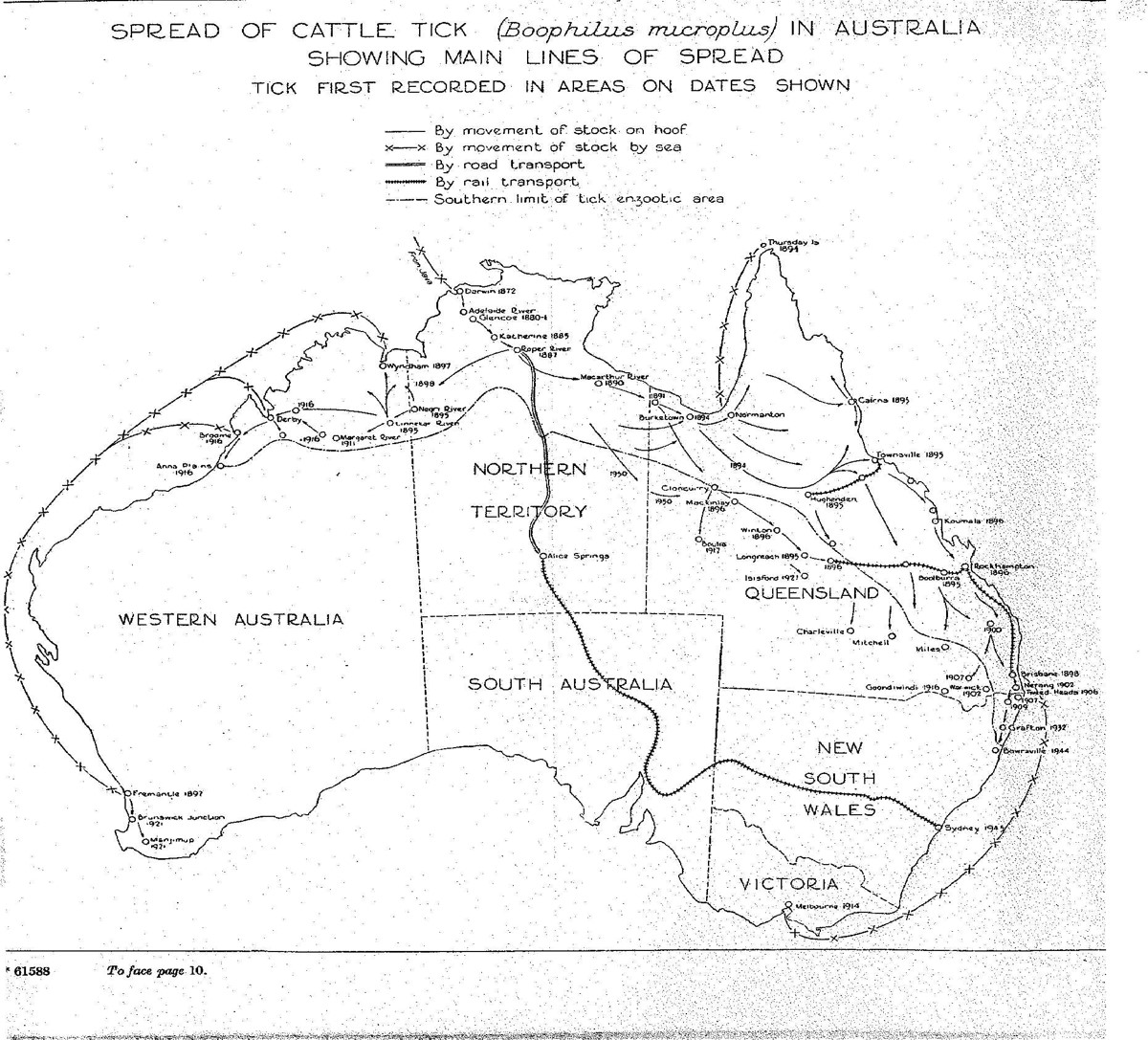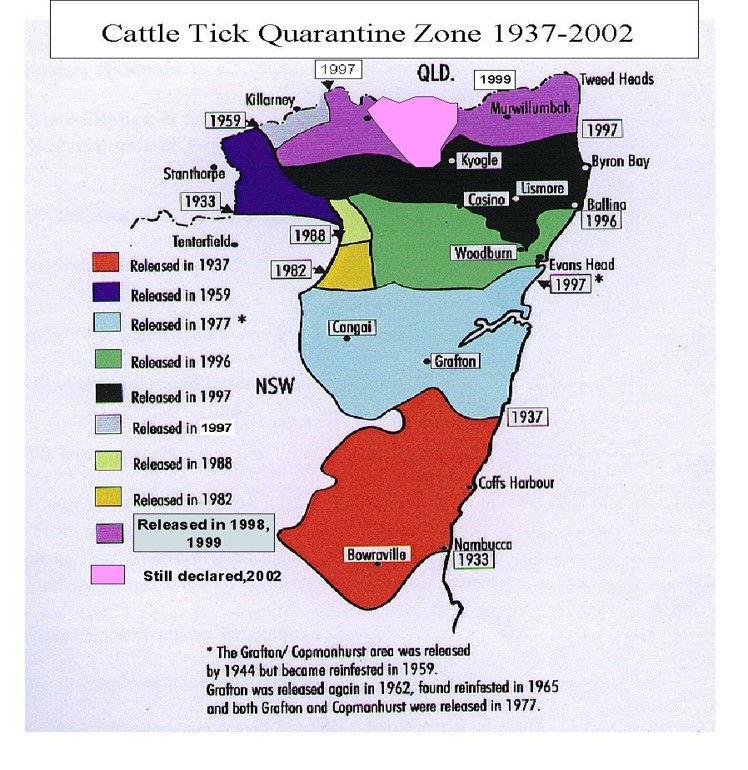
Celebrating 100 years of the NSW Cattle Tick Program
Discover the history of the Cattle Tick Program in NSW.
Established in 1920, the NSW Cattle Tick Program is delivered by the NSW Department of Primary Industries (DPI) to prevent cattle tick from entering the state, and to detect and eradicate infestations of cattle tick within the NSW livestock industry.
Cattle tick was first discovered in Australia in 1872 after 12 head of Brahman cattle were bought from Indonesia to Darwin, infested with live cattle tick. The cattle escaped from the yards in which they were held, depositing live ticks into local pastures which spread into Queensland and New South Wales on droving cattle.

DPI’s Leader Cattle Tick Operations Larry Falls explains forming the NSW Cattle Tick Program was essential for protecting the wellbeing of livestock and preventing substantial economic loss to the NSW cattle industry.
“By 1898 cattle tick had claimed the lives of 3 million cattle. It was important to form the NSW Cattle Tick Program and implement eradication programs to prevent further outbreaks of cattle ticks and tick fever in NSW,” he said.
To control the spread of Cattle Tick, Tick Quarantine Areas were established across the state, and plunge dipping or spraying of livestock at three weekly intervals became compulsory for cattle exiting quarantine zones. 1648 cattle dips and 10 spray race facilities were constructed between 1920 and 1960 on private and public land, from the Queensland border to Taree NSW, extending west to the Great Dividing Range and Munginidi QLD.

The introduction of a new dip wash chemical in 1977 was heralded as one of the most important breakthroughs in tick eradication. The nil withholding period and the inability for ticks to build resistance to the chemical attributed to the success of this control method.
In 1995, compulsory dipping programs were discontinued, and the NSW Cattle Tick Program moved to a search and eradication policy, supported by an enhanced surveillance program at saleyards, abattoirs and border inspection points.
In 2004 NSW was declared tick-free.
“The Cattle Tick Program saved the NSW beef and dairy cattle industries from significant economic damage,” explained Mr Falls.
“It is estimated it would have cost the industry in excess of $30 million annually, had it not been regulated.”
In its 100th year, the NSW Cattle Tick Program continues to work to keep the state tick-free by implementing movement controls on cattle from tick infested areas, employing strategies to eradicate outbreaks of ticks and tick fever, and providing cattle tick control development advice to the livestock industry. As a result, the program delivers a significant net economic impact of $29.13 million annually, emphasising the importance of the program to the NSW cattle industry.
Reporting tick fever
Tick fever is a notifiable disease under the NSW Biosecurity Regulation 2017. Members of the public, including veterinary practitioners and other persons consulted about stock, are required to notify an authorised officer in LLS or NSW DPI about any known or suspected cases of tick fever or cattle tick.
Find more information on how to manage the risk of tick fever.

